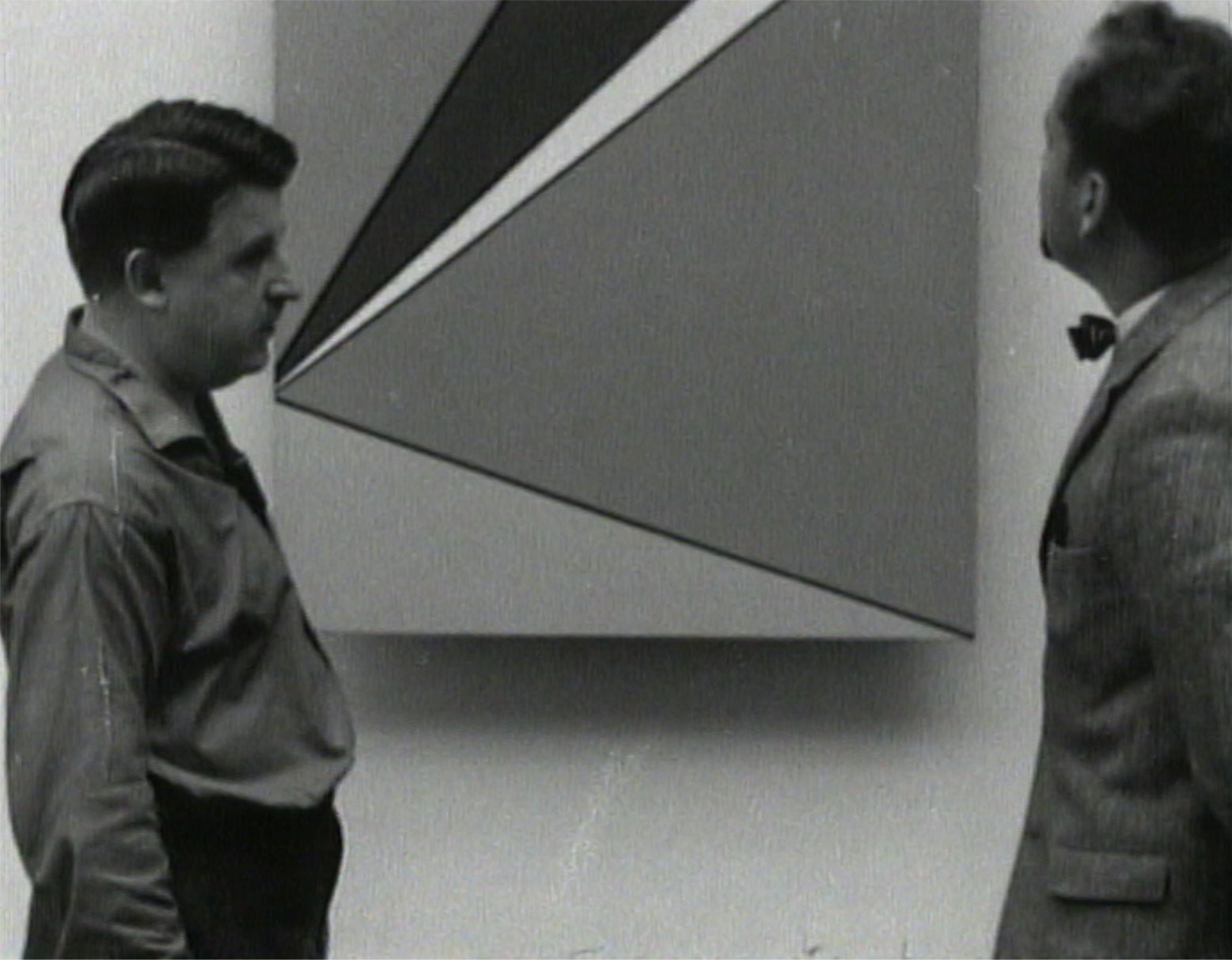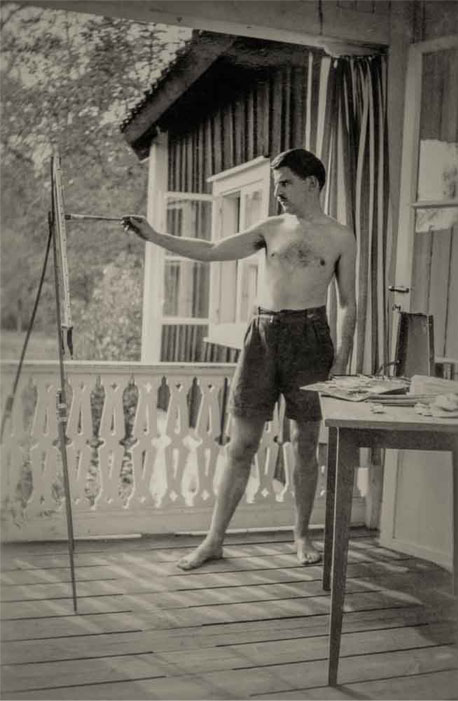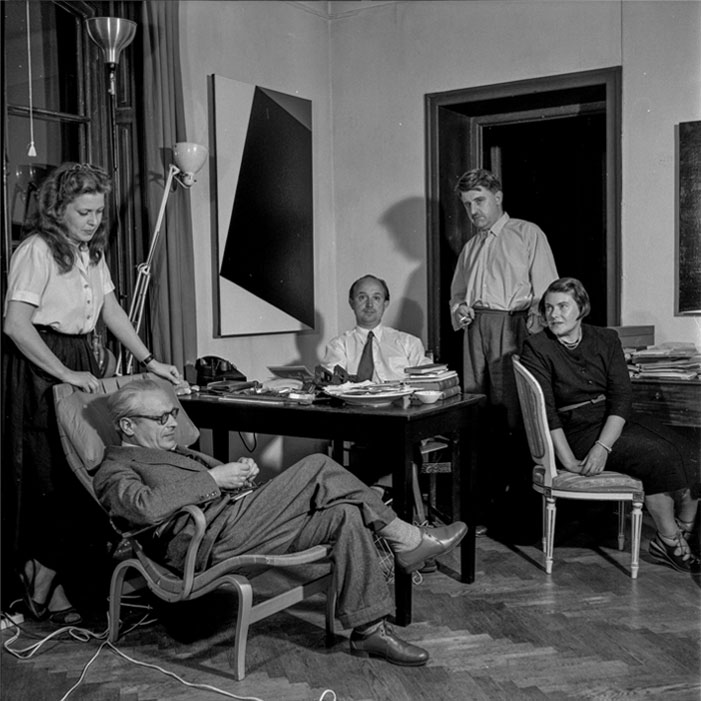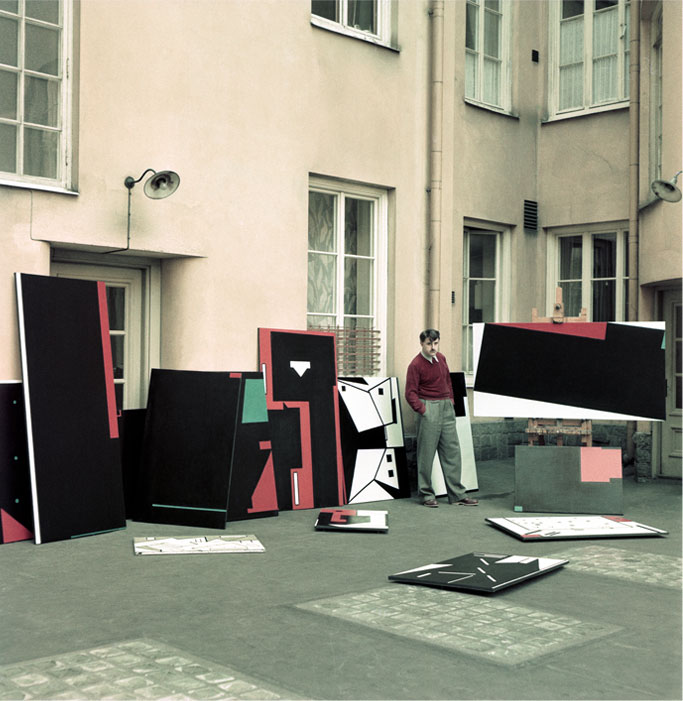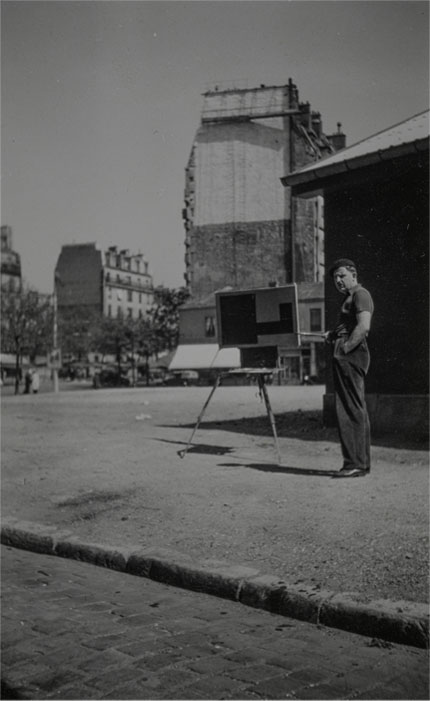Olle Bærtling is one of Sweden’s most significant artists of the 20th century. More than anyone, he has come to represent the abstract geometric art that characterizes one of the post-war period’s most central expressions. He is known for his paintings with a unique visual language of triangular color fields that seem to continue beyond the edge of the canvas. He developed this visual language in sculptures whose expression can almost be compared to the contour lines in his paintings. Bærtling also presented several proposals for monumental sculptures and sketches for architectural buildings, often in collaboration with architects.
Bærtling was a visionary and saw his art as an expression of something greater. For this, he received recognition both nationally and internationally, but he also faced a lot of resistance at times, not least at home. However, this did not significantly concern him, as he remained committed to his chosen path.
Olle Bærtling was born in 1911 in Halmstad, where he completed his secondary education at Halmstad’s grammar school in 1928. The family then moved to Stockholm, where, after completing a commercial training in 1929, he was employed at the bank Skandinaviska Kreditaktiebolaget (later renamed Skandinaviska Banken). Bærtling would stay with the bank until 1956, when he decided to dedicate himself entirely to art.
In 1934, Bærtling began painting in his spare time and sought ways to develop his artistry. Bærtling was self-taught but participated several times in various artists’ private training programs. Alongside Otte Skiöld’s painting school in Stockholm, Bærtling sought out Académie André Lhote and Atelier Fernand Léger in Paris after the war. The artist August Herbin also became an important precursor for him.
